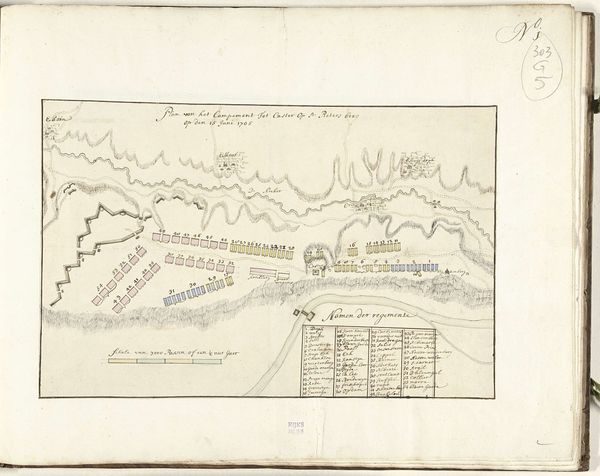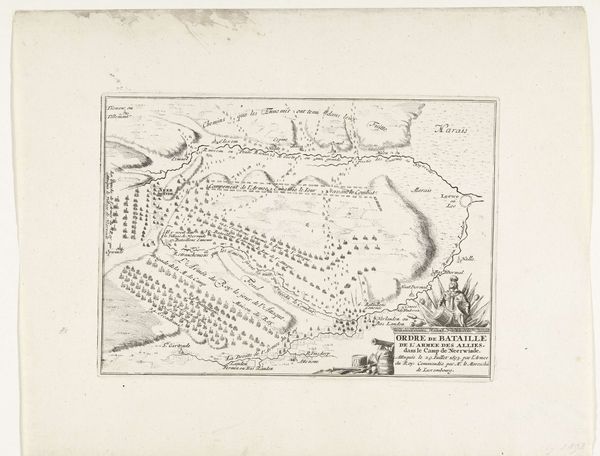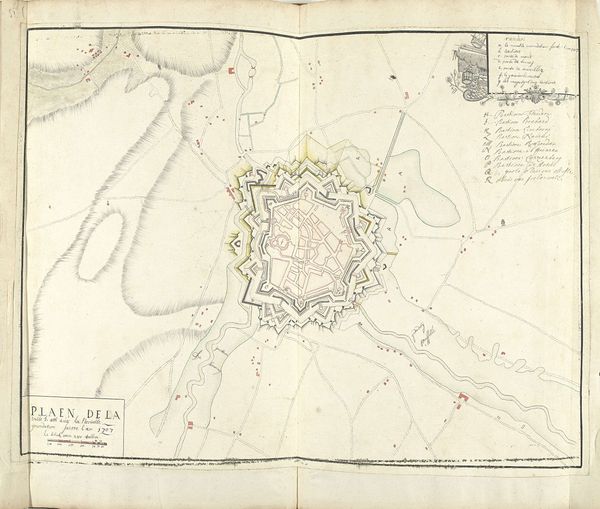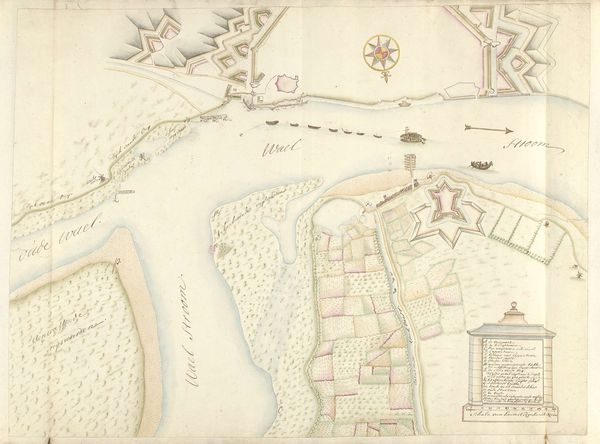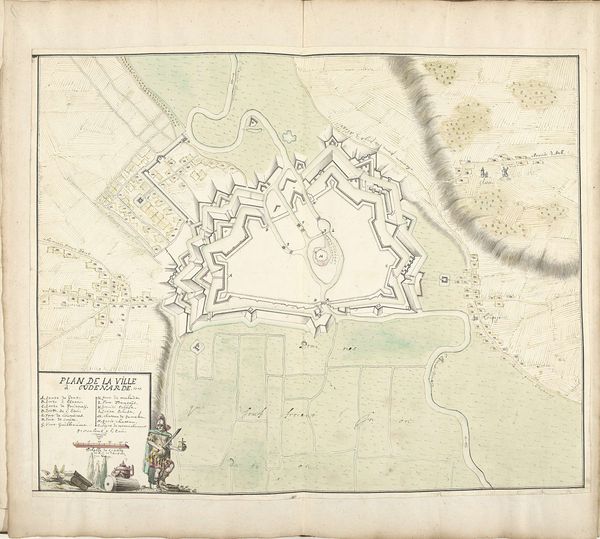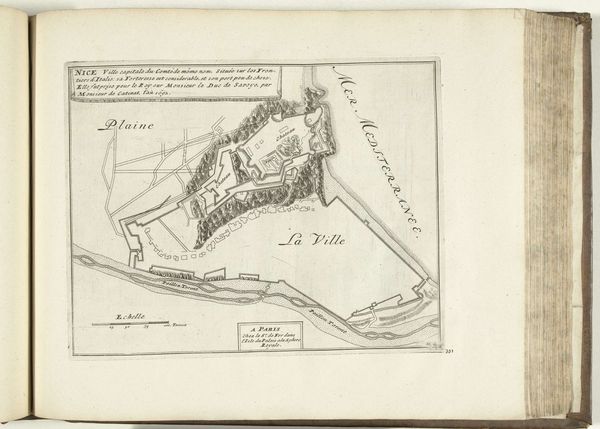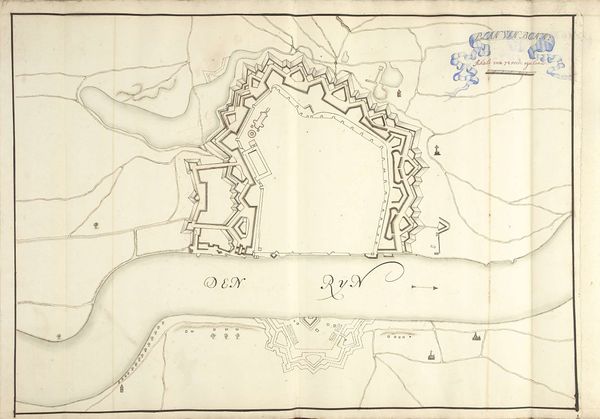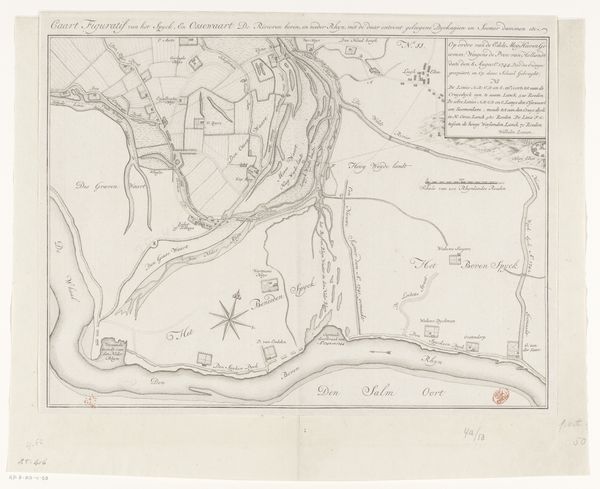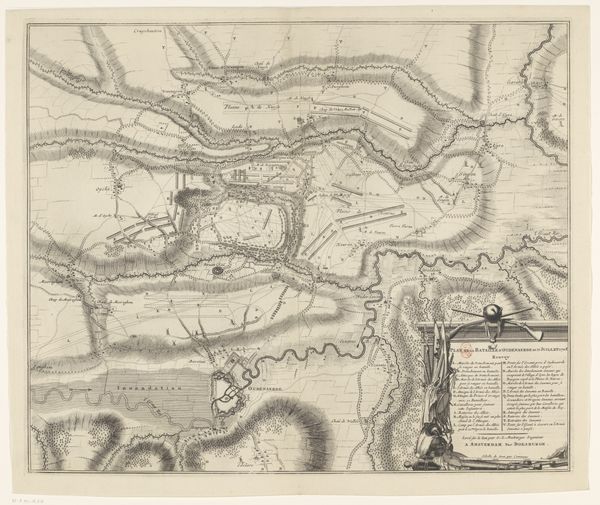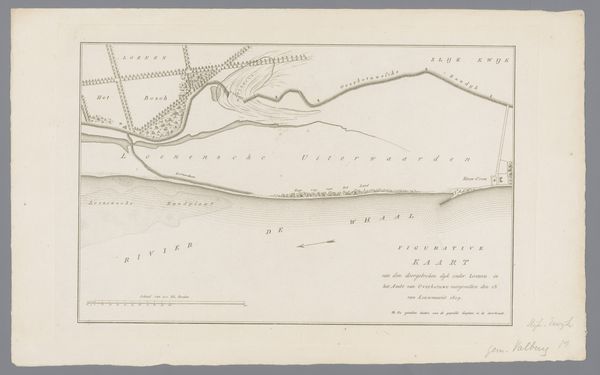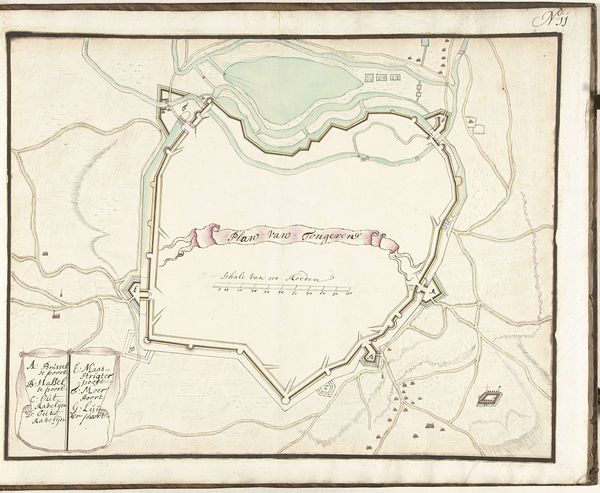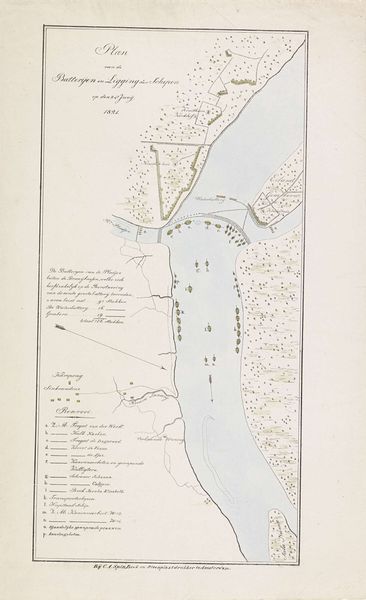
drawing, watercolor, ink
#
drawing
#
aged paper
#
toned paper
#
baroque
#
old engraving style
#
landscape
#
personal sketchbook
#
watercolor
#
ink
#
ink colored
#
pen work
#
sketchbook drawing
#
cityscape
#
watercolour illustration
#
sketchbook art
#
watercolor
Dimensions: height 318 mm, width 411 mm
Copyright: Rijks Museum: Open Domain
Curator: Here we have Samuel Du Ry de Champdoré’s "Beleg van Traarbach, 1704", an ink and watercolour drawing that gives a bird's-eye view of the siege. Editor: My first impression is of fragility and transience; the pale colours and delicate lines feel almost like a memory fading. Curator: Indeed, the muted tones echo the aged paper, speaking to the weight of time on both the physical object and the event it depicts. Consider the conventions of Baroque landscape—there's a similar attempt to impose order and perspective onto nature and the human theater unfolding within it. Editor: Yes, there is definitely something compelling about the tension between the artistry of the topographical depiction and the grim reality of war. We can read the city almost as an organism struggling against external forces. Curator: You are right to read the emotional impact, the city not just as a site, but as a symbolic structure under threat. Fortifications meant order; the crumbling of those signified the dissolution of social order. This map captures not only place, but the emotional reality of siege warfare in the 18th century. Note also, though, how the visual language of siege warfare also reflects patterns we see across historical representations of control. Editor: And seeing this perspective, drawn centuries later, highlights how narratives of war evolve. Does the creation of this image after the event offer an element of aestheticizing distance or justification, even? The choice of such a soft and painterly technique has to be significant. Curator: Precisely! The watercolor adds a layer of contemplative distancing. A different rendering style could have served political rhetoric more immediately. It presents the event as worthy of sober remembrance, suggesting an element of reflective mourning rather than direct, militaristic glory. Editor: Examining this drawing gives an intimate glimpse into both historical events and evolving artistic perspectives on those same moments in time. I found myself seeing a dialogue of social disruption through visual culture. Curator: And it highlights, once more, how powerful maps can be as conveyors of both objective information and subjective experiences. Thanks for unveiling more symbolism of cartography!
Comments
No comments
Be the first to comment and join the conversation on the ultimate creative platform.
